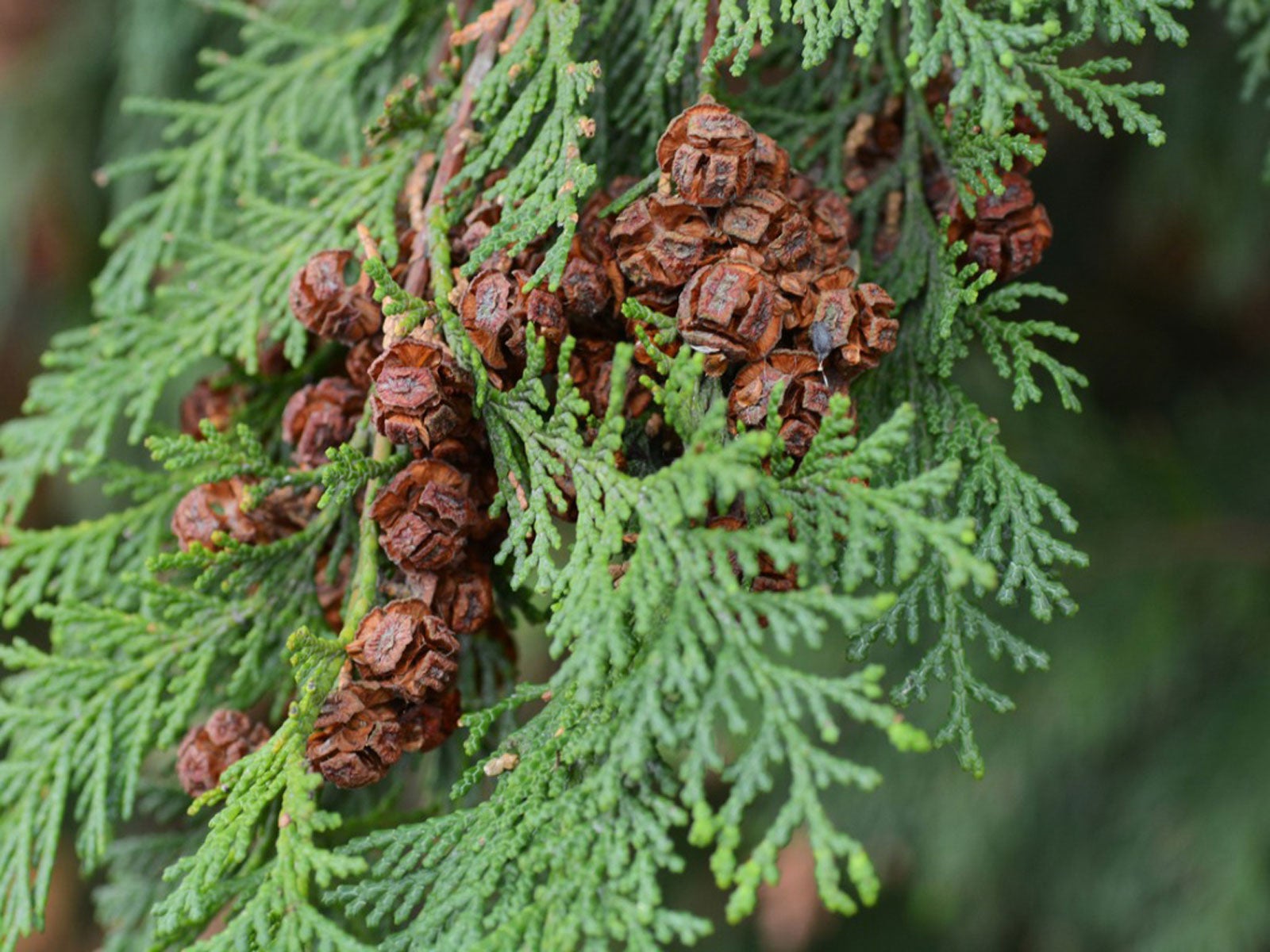Scale Leaf Evergreen Varieties: What Is A Scale Leaf Evergreen Tree


When you think of evergreens, you may think of Christmas trees. However, evergreen plants come in three distinct types: conifers, broadleaf, and scale leaf trees. All evergreens can serve a valuable role in the landscape, providing year-round color and texture.
What is a scale leaf evergreen? Scale leaf evergreen varieties are those with flat, scaly leaf structures. If you’d like to get an overview of evergreens with scale leaves, read on. We’ll also give you tips for identifying scale leaf evergreens.
What is a Scale Leaf Evergreen?
Identifying scale leaf evergreens versus conifer evergreens is not difficult. If you are wondering whether a particular needled evergreen is a scale leaf, the answer lies in the foliage. Look at the needles carefully and touch them.
Pines and other conifers have pointy needles for leaves. Evergreens with scale leaves have quite different foliar structures. Scale leaf tree needles are flat and soft, overlapping like roof shingles, or feathery. Some botanists believe that this type of needle was developed to help conserve moisture in dry, sandy areas.
Scale Leaf Evergreen Varieties
Most people are familiar with popular, fast-growing arborvitae shrubs used so frequently for quick hedge plants, like the eastern arborvitae (Thuja occidentalis) and the hybrid Leyland cypress (Cupressus x leylandii). Their foliage is soft to the touch and feathery.
However, these are not the only scale leaf evergreen varieties. Junipers have scaly foliage that is flattened but also sharp and pointed. Trees in this category include Chinese juniper (Juniperus chinensis), the Rocky Mountain juniper (Juniperus scopulorum), and the Eastern red cedar (Juniperus virginiana).
You may want to avoid juniper trees if you are growing apples in your home orchard. Apple trees can get infected with cedar-apple rust, a fungus that can jump to juniper trees and cause severe damage.
Sign up for the Gardening Know How newsletter today and receive a free copy of our e-book "How to Grow Delicious Tomatoes".
Another evergreen with scale leaves is Italian cypress (Cupressus sempervirens), widely used for landscaping. It grows tall and slender and is often planted in columnar lines.
Identifying Scale Leaf Evergreens
Figuring out if an evergreen has scaly foliage is the first step to identifying the tree species. There are lots of scale leaf varieties. If you want to tell one scale leaf variety from another, here are some clues for identifying scale leaf evergreen genera.
Species in the Cupress genera carry their scale-like leaves in four rows on rounded branches. They look like they have been braided. On the other hand, the Chamaecyparis genus plants have frond-like, flattened branches.
Thuja branches are only flattened in one plane. Look for a raised gland on the back and young leaves that are more awl-like than scale-like. Trees and shrubs in the genus Juniperus grow their leaves in whorls and they can be scale-like or awl-like. One plant can have both types of leaves.

Teo Spengler is a master gardener and a docent at the San Francisco Botanical Garden, where she hosts public tours. She has studied horticulture and written about nature, trees, plants, and gardening for more than two decades, following a career as an attorney and legal writer. Her extended family includes some 30 houseplants and hundreds of outdoor plants, including 250 trees, which are her main passion. Spengler currently splits her life between San Francisco and the French Basque Country, though she was raised in Alaska, giving her experience of gardening in a range of climates.